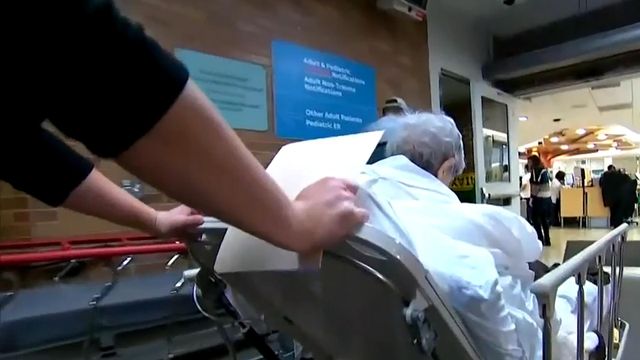Lack of data keeps it unclear whether, when NC will 'flatten the curve' of coronavirus cases
When health experts talk about flattening the curve, the goal is make sure there are enough resources to keep seriously ill COVID-19 patients alive when the virus hits its peak in North Carolina.
Posted — UpdatedFor weeks, government and medical leaders have urged the public to avoid gatherings and public places in an effort to flatten the curve of the coronavirus. While reducing the total number of coronavirus cases is one goal, but it's not the main goal of flattening the curve.
When health experts talk about flattening the curve, the goal is make sure there are enough resources to keep seriously ill COVID-19 patients alive when the virus hits its peak in North Carolina.
"Social distancing is all about buying time," says Dr. Alun Lloyd, a mathematical biologist at North Carolina State University specializing in infectious disease spread.
Lloyd agrees with the steps taken so far that have put life on hold for many. "Those stay at home orders could have a significant impact on the transmission of the infection," he said.
While Lloyd says it's hard to predict when coronavirus infections will peak in North Carolina, that has not happened yet, and residents should take the warnings seriously.
"One thing is clear: This is a lot worse than the typical flu season," Lloyd said.
Yet, COVID-19 is so new and data is so incomplete that there's a lot of educated guessing. It won't be clear that we've flattened the curve until new cases, hospitalizations and deaths level off and eventually start dropping over several days.
Lloyd says North Carolina has one thing in its favor. "Population density makes a difference," he said. North Carolina is the 9th largest state in total population, but ranks just 16th in the total number of cases.
There is data that shows areas with a higher population density and the mass transit that comes along with it are getting hit much harder. What is happening in New York City is not necessarily a good predictor of what could happen here. New York, New Jersey and Georgia all had their first positive cases in the first four days of March, like North Carolina. While North Carolina is approaching 700 cases, New York has almost 31,000, New Jersey has 4,400 and Georgia's cases are twice as high as those in North Carolina.
While he can't predict the peak in North Carolina, Lloyd says one thing is for sure – COVID-19 is here and it's going to stick around for a while. "I think it's unlikely that we can stop this without a vaccine," he said.
The curve will also be flattened as people get the virus and recover. "Ultimately, people have to become immune to this infection, and there are two ways of doing that. Either you catch the infection and survive or you get vaccinated," Lloyd said.
Related Topics
• Credits
Copyright 2024 by Capitol Broadcasting Company. All rights reserved. This material may not be published, broadcast, rewritten or redistributed.






